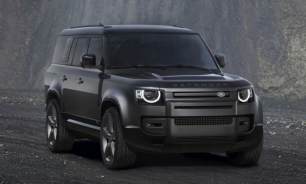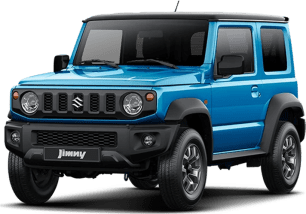The Jimny XL, though longer, and heavier than the three-door Jimny, is still so small, light and nimble that those characteristics are a help and a hindrance.
A help because the XL is easy to steer anywhere – city streets, shopping centre car parks and suburbia. And more importantly, it’s one of the easiest 4WDs to manoeuvre into a parking spot.
A hindrance because it is so small and light that it takes countless minor steering corrections while driving to keep the XL steering in a straight line. And that can be very tiring.
It’s also easily unsettled by irregular surfaces, strong wind and large passing trucks.
You’d think because the XL is 90kg heavier than the three-door Jimny it wouldn’t exhibit those characteristics quite so much, but while it’s marginally better at managing all of those challenges than the standard Jimny, it’s by small increments.
The Jimny XL feels underpowered and vulnerable, especially on highways. Hit 100km/h or so and it feels like the Zook shouldn’t be pushed any harder.
Ride is firm and jittery via a light narrow body on a ladder-frame chassis and coil springs.
However, the Jimny is fun and highly manoeuvrable off-road. Not because of any mechanical or off-road traction control systems, but because it's so small and light.
The Jimny has part-time 4WD (with high- and low-range 4WD) and an 'AllGrip Pro' system of driver-assist tech that includes hill descent control, hill hold assist and more – all adequate in terms of performance.
This is a real 4WD with a full ladder-frame chassis and rigid axles front and rear. It exists in a vehicular realm occupied by other purpose-built 4WDs such as the Ford Ranger Raptor, Jeep Wrangler Rubicon, Toyota LandCruiser 70 Series and Land Rover Defender.
And because of its size, offering up plenty of visibility and with a wheel at each corner, the Jimny is, as mentioned, very easy to steer through rough terrain, because the driver knows exactly where the tyres are at any time.
The Jimny XL has decent off-road angles. Approach is listed as 36 degrees, departure is 47, ramp-over is 24, but this 4WD is not as naturally suited to off-roading as the three-door.
Ground clearance is 211mm and wading depth is unlisted but likely around 300mm.
In 4WD 'High' or 'Low', the Jimny simply keeps on trucking through rough terrain. It doesn't have a diff lock, but because it's so small and light it still manages quite nicely without one.
You have to use plenty of throttle, keeping the revs up and wheels spinning in order to get the most out of that traction control, but that's part of the fun.
However, for the exact reasons it is such a lively drive on-road and such an engaging drive off-road, the Jimny faces a few substantial challenges on tough terrain.
This 4WD demands its driver be fully dialled-into the experience, fully committed, and, while that’s a characteristic I really like, it will exhaust some people.
The Jimny requires constant micromanagement of the steering, transmission and the vehicle itself simply to keep it on track. And that can quickly become tiring, especially if you're not used to it.
Because it's so small and light, the Jimny can be unsettled by corrugations, shallow and deep, skipping around lightly as it attempts to maintain traction and momentum.
Also, while low-range 4WDing, any dramatic changes in the terrain or driving conditions – an abrupt wheel drop into a deep rut, or a shift in onboard load, or a wind gust while driving up a rocky hill – can create instantly tricky, even serious, issues for the Jimny to overcome.
As always, standard tyres (Bridgestone Dueler H/L 195/80 R15) are fine for sealed surfaces and some light-duty off-roading but if you’re planning to drive on anything more than well-maintained formed trails then invest in a set of decent all-terrains.
It has a full-sized spare wheel mounted on the rear door.
On a minor niggling note, there's a lot of in-cabin noise on any track surface, and a noticeable transmission whine.
In terms of weights and practicality for packing, gross vehicle mass (GVM) is listed as 1545kg, 110kg more than the three-door Jimny . But the vehicle weighs 90kg more than the three-door, so there’s that…
Payload is listed as 360kg. Towing capacity is 350kg (unbraked) and 1300kg (braked).

